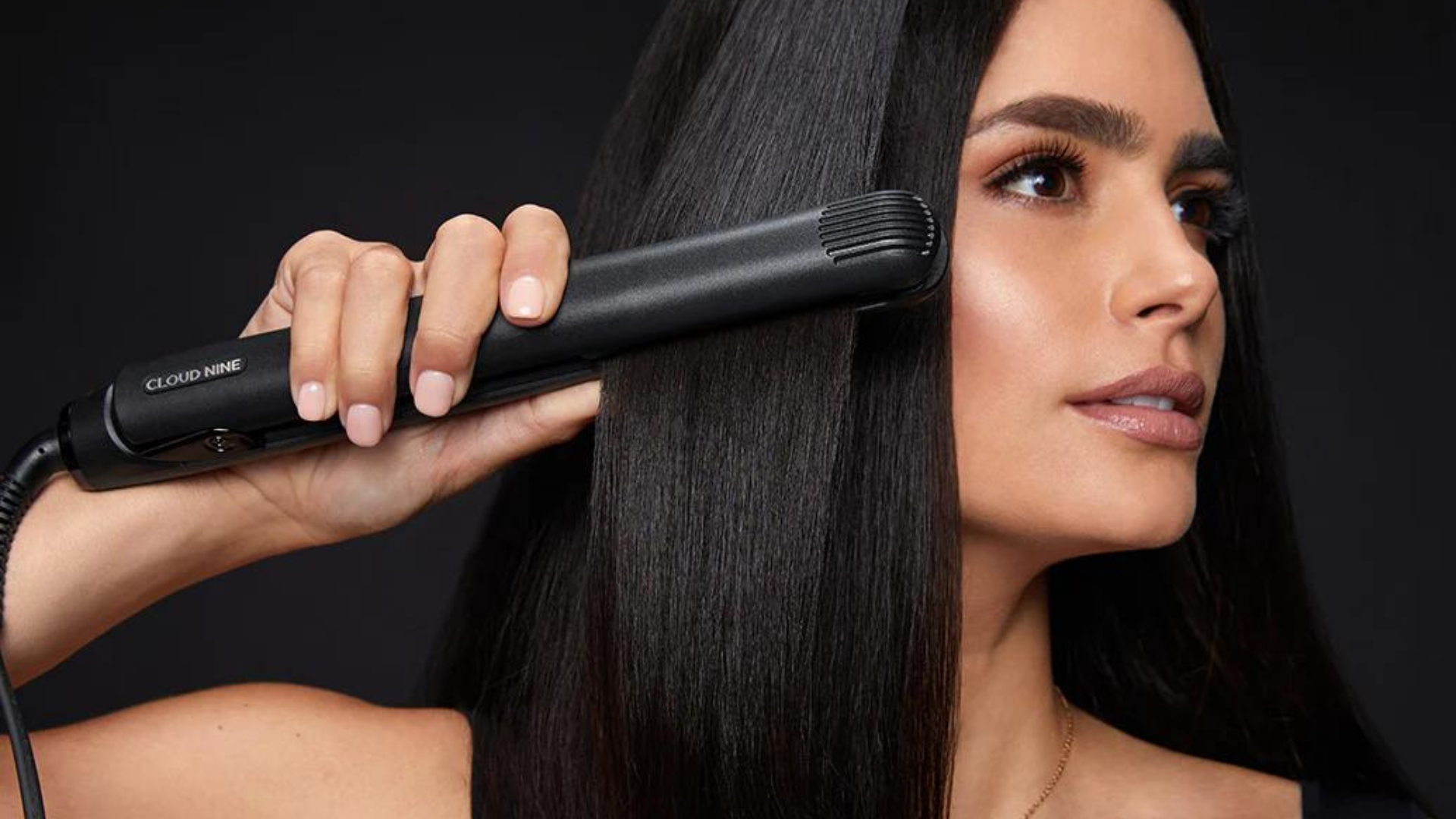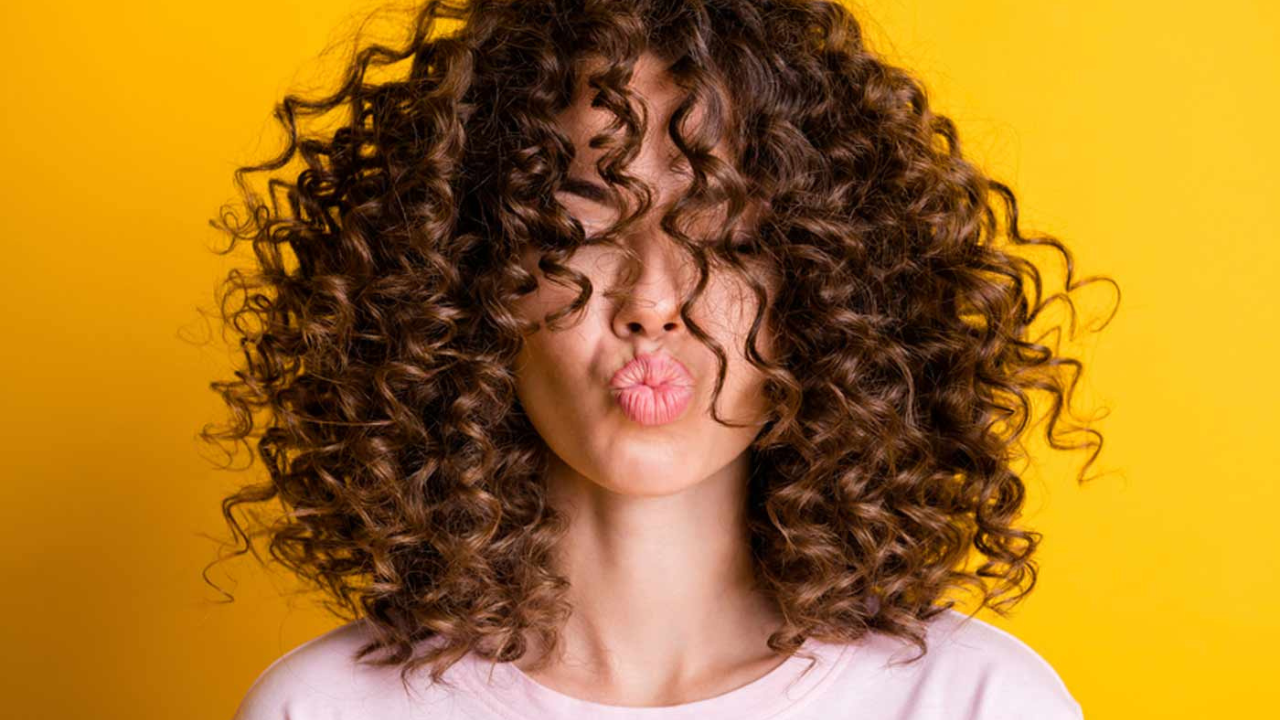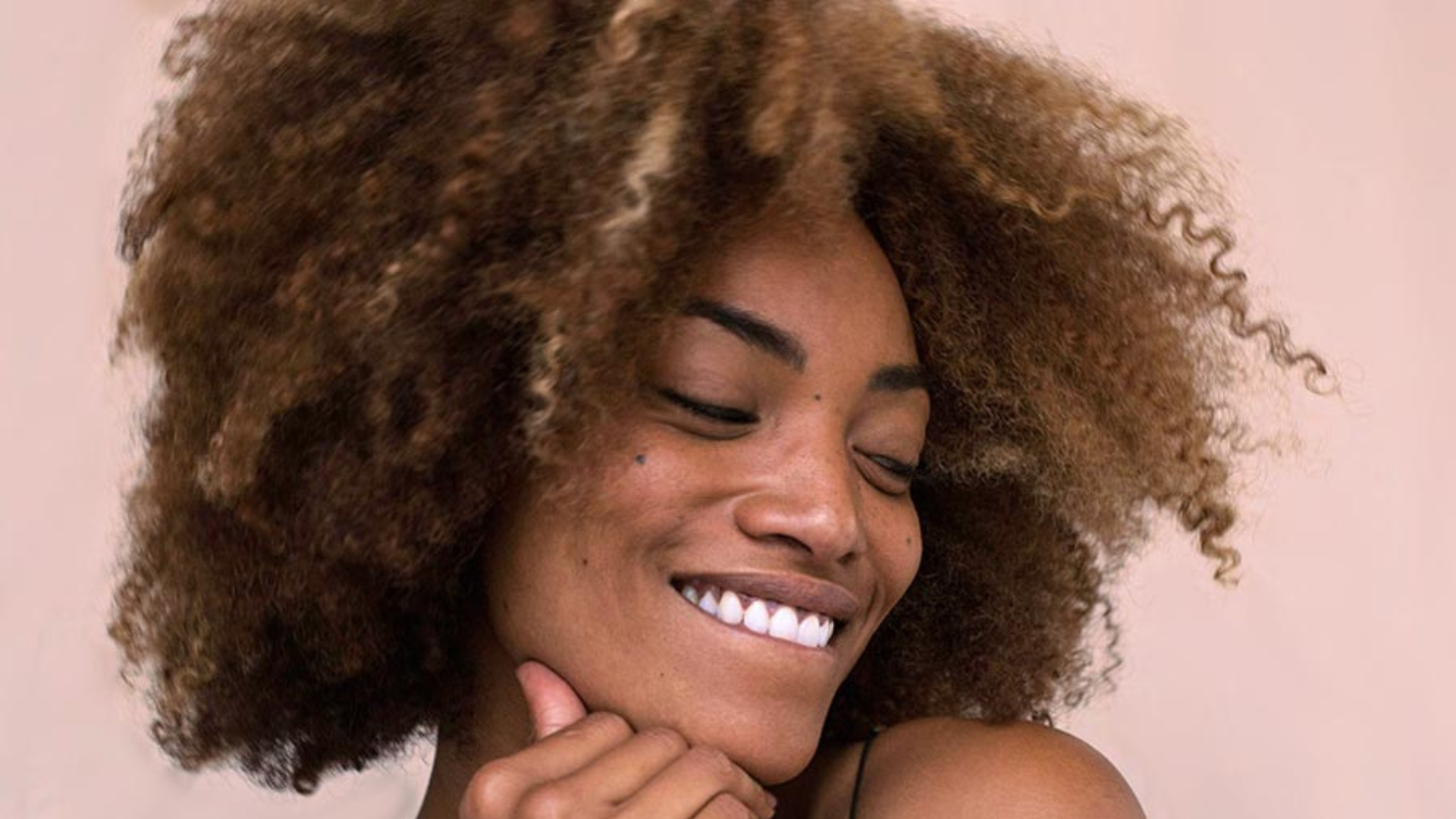Expert reveals the exact temperature you should style your hair
Excessive heat can lead to damage and dryness


The frequency of heated tools being used when styling hair is increasing, with some beauty lovers using heat three or four times per week. Whether you're a fan of the best straighteners, curlers and hot brushes, or tend to just stick to a hair dryer, it's likely that you use heat on your hair one way or another.
Well, a new study using 3D imaging has been released by hair tool retailer CLOUD NINE, comparing the effect of repeat heat styling across different temperatures. The study microscopically looks at hair after being styled at 150 degrees, compared to 200-250 degrees, across different hair types.
Expressing the importance of temperature control for healthier hair in the long run, Marie Nieuwoudt, Creative Ambassador at CLOUD NINE comments, “As hair experts, we know that the higher the heat temperature, the more likely it will cause damage to the hair. Using heat protection sprays and products is key to maintaining your hair health, as is having a heat styling tool with variable temperature control to allow for lower levels of heat to be used when styling."
The study confirmed that styling hair at 150 degrees is hugely beneficial to keeping hair healthy for longer, as opposed to 200 degrees which can cause excessive damage. Keep reading to find out why...
Before you do, have you read how you can create the best haircare routine for your hair type?
Straight hair

Straight hair is hair that naturally lies flat or straight, with no hint of any curl pattern or wave on this hair type.
Using 150 degrees or less on naturally straight hair creates a small lack of elasticity, meaning our hair tresses will become limp, stretched out, and then prone to damage. However, the cuticles remain closed and flat, maintaining your hair's hydration balance and flexibility.
Get all the latest news, reviews, deals and buying guides on gorgeous tech, home and active products from the T3 experts
Higher temperatures on straight hair causes breakages to the hair shaft, causing split ends to appear. The hair will start to dry and the cuticles crack. At this stage of heat, the helices of the hair protein begin to melt causing irreversible damage.
Wavy hair

Styling wavy hair at 150 degrees is far better than 200 degrees. With 150 degrees, there is no lack of elasticity and the hair cuticles have shingles that are closed and flat, meaning the hair is still protected and water molecules are still present.
According to a study by Tahira Reid, wavy hair seems to exhibit the highest thermal conductivity of all at low temperatures - meaning it’s better at letting heat move through it. Over 200 degrees on wavy hair will show slight breakages to the hair shaft including larger split ends and the moisture in the hair will now start to depart, meaning the hair could feel brittle and dry.
Curly Hair

At 150 degrees or less, the hair cuticles on curly hair are closed and flat, meaning they are protected. The curl pattern will be unaffected and remain healthy with minimal lasting damage.
When 200 degrees is applied to curly hair, there will be breakages as the hair begins to melt. The shaft will get split ends becoming dry and brittle as cuticles crack. When regularly using a styler at 220°C, the hair tresses show a reduction in reversion and shift to lower curl types.
Kinky hair

Kinky hair is very tight, textured hair. Often referred to as ‘afro-hair’, the hair has a zig-zag pattern and can be fine, dry, soft or coarse.
Using 150 degree heat on kinky hair will lead to a small lack of elasticity and the hair cuticles will start rising. This means that the cuticles are opening and losing their protective properties. High temperatures on kinky hair will melt the hair shaft and lead to large breakages, split ends and potential knotting. The hair will be completely dry with no cuticle scales or moisture. A study by Tahira Reid also found that this hair type has lower tensile properties (the level of tension hair can withstand before breaking) than other hair types.
How to keep your hair healthy
There are many things you can do to keep your hair in top condition, without compromising on the heat-required hairstyles you love.
1. Limit heat use
The best thing about styling your hair with tools is that the results can last for a couple of days. This means you can rework the hairstyle, making it last rather than needing to apply heat every day.
2. Use temperature variation
Use heat styling tools that have Variable Temperature Control between 100-200 degrees, so you can use lower heat when necessary, reducing damage to the hair shaft. Using temperatures 185 degrees or below causes the least amount of damage to all hair types. The hair loses the least amount of elasticity in this range and the cuticles remain mostly closed.
3. Use heat protectants
Always prep your hair before applying any heat. Using our Magical Potion heat protect spray, the lightweight conditioners will work to protect hair from heat damage. Heat protectants such as our Magical Potion spray add a protective layer to the hair cuticles, stopping them from rising and opening meaning they are less prone to damage and breakage. Heat protection sprays also seal moisture in the hair, preventing it from becoming dry or brittle, whilst smoothing and sealing the hair.
Already struggling with dry hair? Read these expert-approved tips that will get rid of your dry and damaged hair.

Lizzie is T3's Home Living Staff Writer, covering the latest in smart home, lifestyle and beauty tech. From skincare gadgets to vacuum cleaners, she's your go-to for trends and top recommendations.
When not writing, Lizzie enjoys mooching around Bath, spending time with loved ones, or testing her review units – often during an enthusiastic cleaning spree!